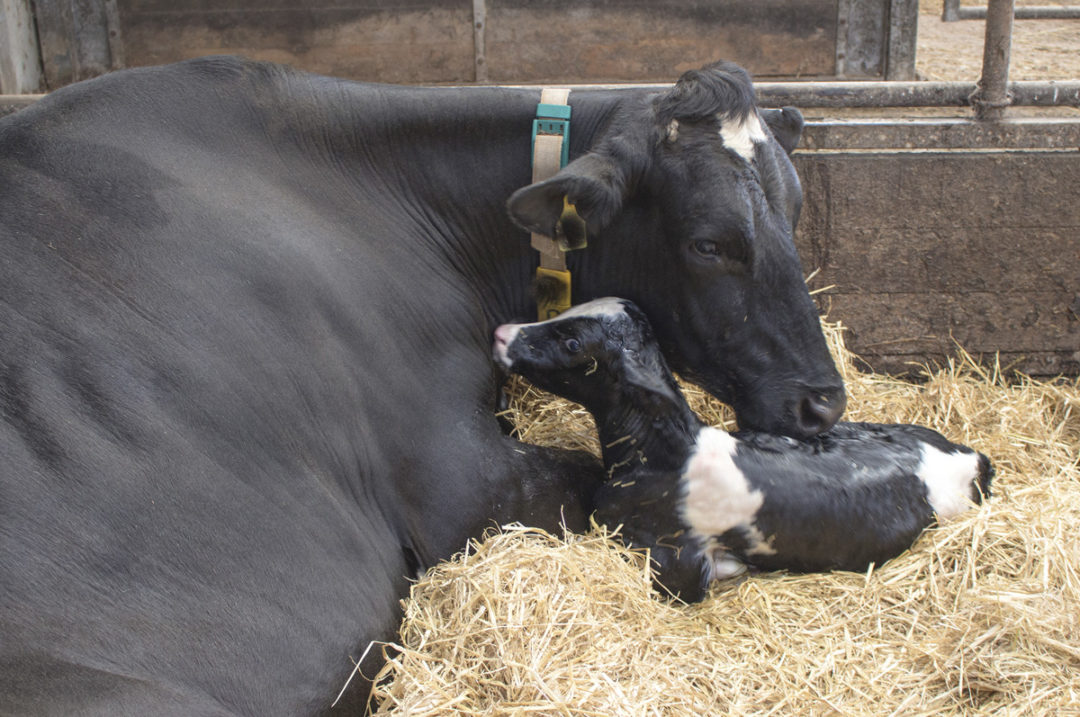Minimizing metabolic disorders like ketosis and enhancing transition cow health is at the heart of every dairy’s herd management strategy. And with good reason. This vulnerable period sets the stage for the cow’s lactation and reproduction, as well as influences your farm’s financial success.
So, what if cows could tell you about what’s going on inside of them before you can see what’s happening outside? They already do, but people don’t always hear what cows are saying.
Cows usually tell you they need help, but you must speak their nonverbal language and listen to these cues with more than your ears and eyes. In nearly every instance of a health challenge, cows offer warning signs. But you must understand their language to avoid the silent theft of your profits.
Data generated by herd monitoring technology can help break this communication barrier and help you recognize what your herd is trying to say. Activity and rumination data offer timely, actionable information, especially when it comes to transition period challenges like ketosis, which costs a dairy about $232 per case. This information also helps you identify the one cow out of a group needing special attention while allowing herdmates to maintain their regular routine.
Ketosis costs
Although not the most expensive transition disorder on a per-cow basis, ketosis is one of the most prevalent diseases in dairy cows, with incidence ranging from 20% to 60% depending on the herd. Ketosis occurs when a cow cannot increase feed intake enough to adapt to the large demand for energy that comes with lactation. As a result, the cow mobilizes body fat, which overwhelms metabolic processes in the liver and causes ketones to accumulate in the blood.
Dairy cows with ketosis also have an increased risk of developing other metabolic-related disorders, decreased milk yield and reproductive performance. These challenges also increase the likelihood of cows exiting the herd. For example, milk production has been shown to decrease by 3% to 7%, and high-producing cows may experience even greater losses. Cows with ketosis have three to 19 times greater risk for a displaced abomasum and have a three times greater chance of being culled in the first 30 days after calving. These cows are 1.2 to 1.7 times less likely to conceive at first breeding.
Earlier detection
While treatment for ketosis isn’t necessarily expensive, clinical signs are often hard to detect – and subclinical signs even more difficult.
Researchers at Penn State note prevention is much cheaper than treatment. Cows diagnosed and successfully treated for transition disorders still face decreased performance in current and future lactations. Also, the indirect costs associated with these disorders are often higher than the treatment itself.
For example, veterinary and labor costs for a single incident of ketosis were $64, which is 35% of the total cost per incidence of ketosis for multiparous cows. Similarly, for a single case of retained placenta, which can accompany ketosis, veterinary and labor costs were 31% of total costs ($96 of $313) for multiparous cows.
Those indirect costs negatively affect future performance of the cow, including reproduction, milk production, animal welfare and the risk of biological removal from the herd. As a result, they slowly and silently reduce farm profits.
There’s a significant payoff in prevention. A 1,000-cow dairy with a 30% ketosis incidence would spend just under $70,000 annually to address the disorder. If the farm lowered its ketosis incidence to 25%, it would recoup approximately $11,600 annually. Dropping ketosis to 15% would save the dairy $34,800 in treatment costs alone, not even counting the opportunity cost of milk loss.
Employ data
Herd monitoring technology can help you prevent profit loss because it can be your eyes and ears all day, every day. Use this data to better understand what cows are telling you so you can focus on ketosis prevention rather than treatment.
Look at a cow’s rumination activity for 10 days pre- and 10 days post-calving. You should see natural peaks and valleys with a normal drop at calving. However, cows should rebound to normal rumination activity within a day or two.
Nearly every time you dig into the data for a cow with ketosis post-calving, you can go back to the dry cow period and see the warning signs. The cow was silently saying something was wrong, even though the issue couldn’t be seen by the naked eye.
Use the information cows share through herd monitoring technology to develop preventative solutions, whether it’s a change in dry period management or a more proactive program post-calving. You need the cow to get off to a good start, achieve peak milk production earlier and breed back sooner.
Data can help you manage your herd by exception – only addressing those that need attention and allowing all others to maintain regular routines. For instance, if the system shows an entire group is experiencing rumination issues, the pen and ration may need to be checked and an environmental or nutrition issue addressed. If the group appears healthy and an individual cow triggered an alert, ketosis or another transition disorder is possible.
Those days lost in early lactation can never be recouped, and milk yields will never bounce back to where they should have been. Always keep in mind that when you sacrifice milk yield, you sacrifice profitability. In one real-life example, cow rumination activity dropped significantly the day before calving and remained depressed until the cow received treatment for ketosis, which wasn’t visibly diagnosed until day six. The result was a lost week of productivity that could have been prevented.
Get ahead and stay ahead
Today’s technology allows a dairy to advance its protocols for teams to be efficient and effective with their time. Herd monitoring helps dairies get ahead and stay ahead of transition period challenges for the long-term benefit of the herd.
Don’t rely on just your eyes to catch signs of trouble. Utilize herd monitoring technology to track cows' actions all day, every day to support and enhance herd health. Get comfortable with letting the data identify issues versus waiting for clinical signs to appear. You must fully put your trust in the herd monitoring system to reap the rewards – and to hear what your cows are telling you.







